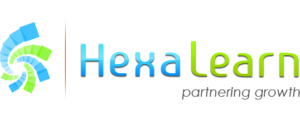SCORM Record Per Language
It seems easy: equate text, swap media, export new SCORM and upload to the LMS. But for discovering developers, this method can insidiously increase work, balloon expenditures, and include complexity to upkeep when creating multilingual eLearning courses. Let us find out just how this affects the eLearning growth process and exactly how Training Designers and designers can construct extra scalable multilingual options.
1 Growth Expenses: Time, Equipment, And Variation Control
Translation And Localization Traffic Jams
- Each training course upgrade– be it a brand-new examination, photo, or conformity modification– means restoring every language translation. Developers need to repackage, re-test, and re-upload each data manually, reducing iteration cycles down.
- Localization teams need to deal with language-specific possessions (audio, video, captions, message on-screen), all of which require programmer intervention for each SCORM outcome.
Authoring And SCORM Upkeep
- Programmers commonly invest hours reconfiguring manifests, changing LMS tracking, and confirming interactions for every version.
- Each language becomes its own “mini-project,” enhancing QA and LMS testing cycles for programmers and reviewers alike.
Storage And Deployment Obstacles
- Keeping multiple SCORM versions consumes added repository space and LMS bandwidth. Developers have to additionally preserve regular documents structures throughout all variants to stay clear of confusion.
2 Indirect Development Prices: Complexity And Danger
Version Wander Throughout Languages
- When programmers manage multiple SCORM outputs, updates may not present evenly. Learners in different regions might access outdated versions– a concern that shows badly on both L&D and conformity groups.
Greater Support Tons
- Pests special to one language version usually need developer-level debugging.
- Dissimilar SCORM setups can cause irregular LMS monitoring or conclusion coverage– draining development and support sources.
Scalability Roadblocks
- For eLearning programmers, every extra language implies new authoring, QA, and product packaging tasks. As multilingual demand grows, maintaining parity throughout variations becomes unsustainable.
3 Influence On Learning Experience
Postponed Rollouts
- Learners may wait weeks for updated versions in their language because programmers are busy reconstructing numerous SCORMs.
Inconsistent Knowing Quality
- Differences in navigating labels, subtitles, or UI formats across versions can confuse learners and break design uniformity.
- Without linked advancement operations, availability elements (alt text, records, captions) may vary in quality from one language to an additional.
Smarter Approaches For Establishing Multilingual eLearning
Produce One Training Course– Release in Numerous Languages
New writing software application make it possible for developers to construct a solitary SCORM package with language choice controls. This technique maintains the course logic centralized however conserves the translations as modular resources– making it much simpler to obtain consistent outcomes throughout languages.
Sponsored content – write-up proceeds listed below
Trending eLearning Writing Tools
Externalize Text And Media Assets
By maintaining message, captions, and UI labels in exterior resource files (e.g., XLIFF, JSON, XML) the SCORM can be revised by programmers in terms of translations without recreating the entire SCORM. This method assists in quicker updates and enhanced collaboration in between localization groups and Educational Developers.
Take Advantage Of LMS Localization Features
Numerous LMS platforms support multilingual UI components, notices, and also training course titles. Designers can concentrate on content-level localization as opposed to duplicating entire bundles.
Automate QA And Version Control
Incorporating variation control (e.g., Git, SVN) and automation tools helps eLearning programmers track changes, restore multilingual training courses effectively, and avoid version drift. Automated testing scripts can look for busted web links, missing out on captions, or inconsistent shows up throughout languages.
The Advancement ROI
Framing the concern from an advancement point of view aids stakeholders comprehend the business instance:
- Decreased work
For eLearning developers: fewer rebuilds and hand-operated product packaging jobs. - Faster updates
Across all languages when governing or material adjustments happen. - Regular learner experience
Across areas, enhancing high quality and involvement. - Lower long-lasting maintenance expenses
Enabling groups to scale worldwide discovering programs smoothly.
Final thought
For eLearning developers, having separate SCORM documents by language can make a simple localization job into an upkeep migraine. Truth possibility is in rethinking creating multilingual eLearning design– embracing modular, automation-centered layout principles that streamline localization, warranty variation uniformity, and maintain high quality at range.
Via the application of central web content models, LMS localization capacities, and automation systems, advancement teams are able to bypass tiresome SCORM packaging rep to focus on what is crucial: the design of engaging, available, and reliable learning experiences for around the world target markets. This unified approach not only streamlines material delivery yet also makes certain constant learner interaction and performance across all languages and regions.
